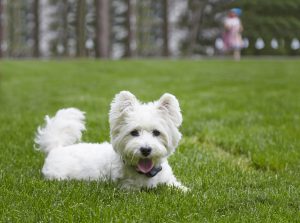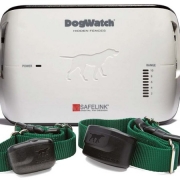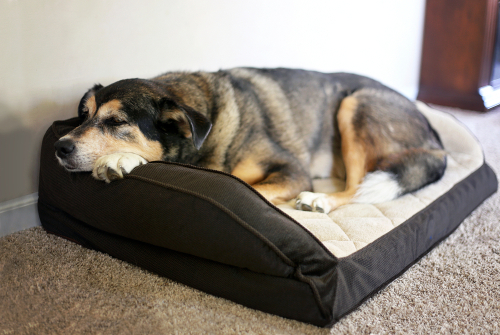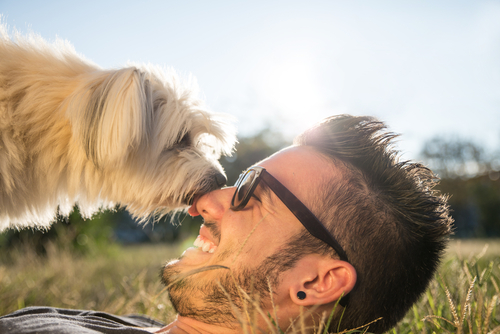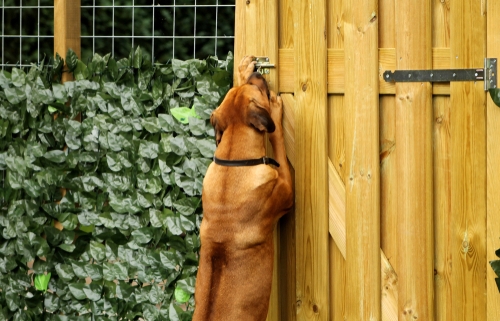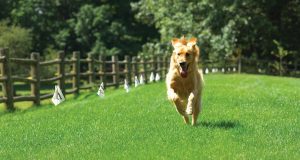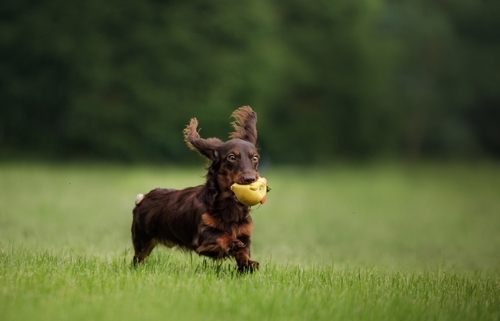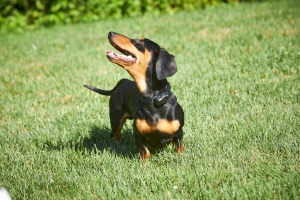How to keep your dog in your garden
/in Uncategorized/by Sam Chapman7 Effective Ways to Keep Your Dog Safely Contained in Your Garden
Want to learn how to keep your dog in your garden? Your garden should be a haven for your dog—a place where they can roam, play, and relax. But sometimes, dogs have a tendency to wander, putting their safety at risk. If you’re wondering how to keep your dog in the garden without them escaping, here are five effective ways to ensure they stay secure and happy.
1. Install a Dog Fence for Security
The most effective method to keep your dog in the garden is to install a dog fence. These fences come in various types, from traditional physical barriers to invisible dog fences, which offer a discreet way to ensure your dog stays within boundaries. For reliable, advanced solutions, visit DogFence.co.uk for high-tech invisible fencing systems designed for dogs of all sizes.
2. Use Training Techniques
Training your dog to respect boundaries is key to garden safety. Start by teaching them to stay within a specific area. Combine this with positive reinforcement techniques, ensuring they associate staying in the garden with rewards.
3. Create Physical Boundaries
For smaller gardens, consider using garden planters, shrubs, or hedges to create a natural boundary. These serve as a visual cue for your dog and add to the aesthetics of your garden.
4. Make the Garden Exciting
Dogs can become escape artists when they are bored. Keep them entertained with toys, obstacles, and plenty of shaded areas. The more engaging the garden is, the less likely they are to look for a way out.
5. Supervise Your Dog
While fencing and training are great solutions, nothing beats supervision. When you’re in the garden, keep an eye on your dog to ensure they are safe and not attempting to dig under fences or find a way out. So why choose a hidden, electric, invisible or electronic dog fence over a traditional fence? The answer is simple ……… because they cover the entire perimeter including the drive and other open areas. So if you are looking for a safe, affordable and reliable solution why not investigate an electronic dog fence?
6. Invest in a Reliable Containment System
The first step in dog-proofing your garden is to invest in a reliable dog fence. If you want to avoid physical barriers, consider the quality of the system, as with all products sadly you get what you pay for! It is important to look at the quality the system and size and weight of the collars. Our DogFence collars are the smallest lightest and most reliable worldwide and come backed up with a lifetime warranty and containment promise.
7. Regularly Check for Gaps or Escape Routes
If you’re using a physical and not an invisible fence then it’s important to regularly check your garden for potential escape routes. Dogs can be clever, and even a small gap may become an escape route. Regular maintenance will prevent accidents and ensure your dog stays within the safety of the garden.
More about Invisible dog fences to keep your dog in your garden
- Aesthetic Appeal: No need for physical barriers that disrupt the look of your garden.
- Flexibility: Invisible fences can be installed around any garden shape or size, offering more flexibility than traditional fencing.
- Training Support: The systems are safe and harmless and through our training programme helps them learn the boundaries quickly with ease.
Why Invisible Dog Fences Are Ideal for Gardens
Invisible dog fences are particularly useful in maintaining the beauty of your garden while ensuring your dog stays safe. They also work well with irregularly shaped gardens or large areas where a traditional fence might be impractical. With DogFence.co.uk, you can customise the system to fit the exact layout of your outdoor space.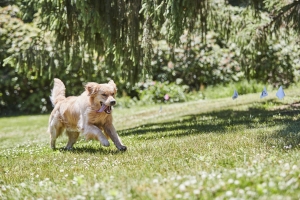
How to Install an Invisible Dog Fence
Installation is straightforward. You or a professional can install the fence underground or above ground, depending on your preference. For the best results, it’s recommended to consult with our experts at DogFence.co.uk for a seamless setup.
By using a combination of these tips, you’ll create a safe, enjoyable garden space for your dog. For advanced containment systems, DogFence.co.uk offers industry-leading invisible fences that guarantee peace of mind. Call us today for more info or a free quote 01628 476475




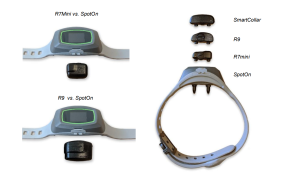 collars are not only the smallest and lightest worldwide among standard wired systems but also significantly lighter and less bulky than Geo collars. While our lightweight collar weighs less than 40g, including the battery, a typical Geo collar weighs around 227g. The average battery life on our mini collar = 6 months and on our standard collar = 2 years, whereas the run time on a Geo Collar = 36 hours (8 hours tracking). The extra weight of a Geo collar is due to the hardware required to connect with orbital satellites, making it inherently larger and heavier. In terms of warranty, Geo collars come with a one-year warranty that doesn’t cover accidental damage. In contrast, our DogWatch collars come with a lifetime warranty, even covering damage from dog chews
collars are not only the smallest and lightest worldwide among standard wired systems but also significantly lighter and less bulky than Geo collars. While our lightweight collar weighs less than 40g, including the battery, a typical Geo collar weighs around 227g. The average battery life on our mini collar = 6 months and on our standard collar = 2 years, whereas the run time on a Geo Collar = 36 hours (8 hours tracking). The extra weight of a Geo collar is due to the hardware required to connect with orbital satellites, making it inherently larger and heavier. In terms of warranty, Geo collars come with a one-year warranty that doesn’t cover accidental damage. In contrast, our DogWatch collars come with a lifetime warranty, even covering damage from dog chews